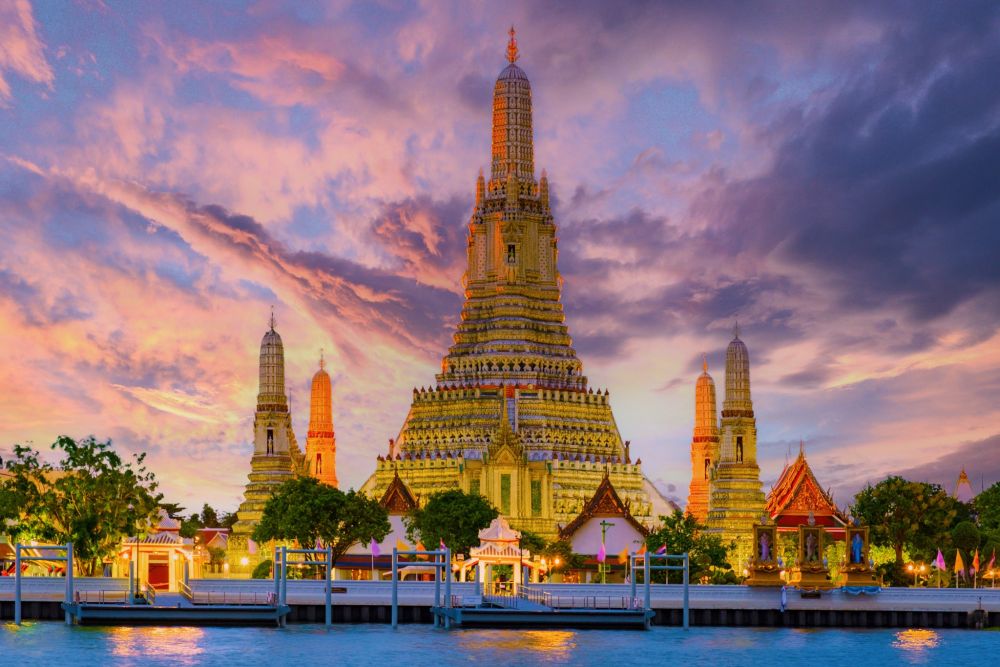

Known as the Temple of Dawn, Wat Arun is one of the most stunning and iconic landmarks that graces the skyline of Bangkok. Historically, Wat Arun dates back to the era when Ayutthaya was the capital of Thailand, with its origins shrouded in the early 17th century. The temple assumed its current significance during the reign of King Taksin in 1768 when he restored the temple after arriving from the fallen city of Ayutthaya. Undergoing several renovations throughout its history, the most significant makeover was done during the reign of King Rama II in the early 19th century.
Wat Arun, situated on the west bank of the Chao Phraya River, stands as a symbol of the birth of the Rattanakosin Period and the founding of the new capital, Bangkok, after the fall of Ayutthaya. Its central prang (spire) represents Mount Meru, the center of the world in Buddhist cosmology, and is covered in colorful porcelain and ceramic tiles, which gleam beautifully in the morning light and gives the temple its nickname.
The temple has long been a staple on the Bangkok tourism trail. Visitors often combine a trip to Wat Arun with visits to the nearby Grand Palace and Wat Pho. In the past, Wat Arun was mainly visited by backpackers and adventurers attracted to the region by its rich heritage. However, the rise of budget airlines and social media has transformed the temple into a must-visit destination for a broader audience. To accommodate the increasing number of visitors, Bangkok has developed a range of infrastructure and services, such as ferries, guided tours, and visitor centers.
In recent years, Wat Arun has responded to changing tourism trends with offerings that cater to the convenience and information needs of modern travelers. Interactive and informative tours using digital applications have become popular, enhancing the visitor experience. Nighttime tourism is also gaining traction, with Wat Arun opening its doors after dark to showcase the lit-up prang against the night sky—a sight that has become a favorite photo opportunity for Instagram enthusiasts. Additionally, the area around the temple has seen a surge in boutique hotels and eateries, making the neighborhood a vibrant part of Bangkok's nightlife and culture scene.
For those planning a visit, the temple's architecture, its historical significance, and its role in the Buddhist religion are major draws. Climbing the steep steps of the central prang offers panoramic views of the river and the city. Visitors are advised to dress respectfully, covering shoulders and knees as a sign of respect within this sacred site. The temple is accessible by riverboat and is open every day with an admission fee for non-locals. With its historical depth and contemporary appeal, Wat Arun remains a jewel in the crown of Bangkok's tourism landscape.
Wat Arun is not only a significant cultural and historical landmark but also a testament to Thailand's enduring appeal as a top tourist destination. From its early days as a spiritual center through its evolution into a modern tourist hotspot, Wat Arun has adapted while retaining its unique allure and spiritual essence, attracting visitors from all over the world.